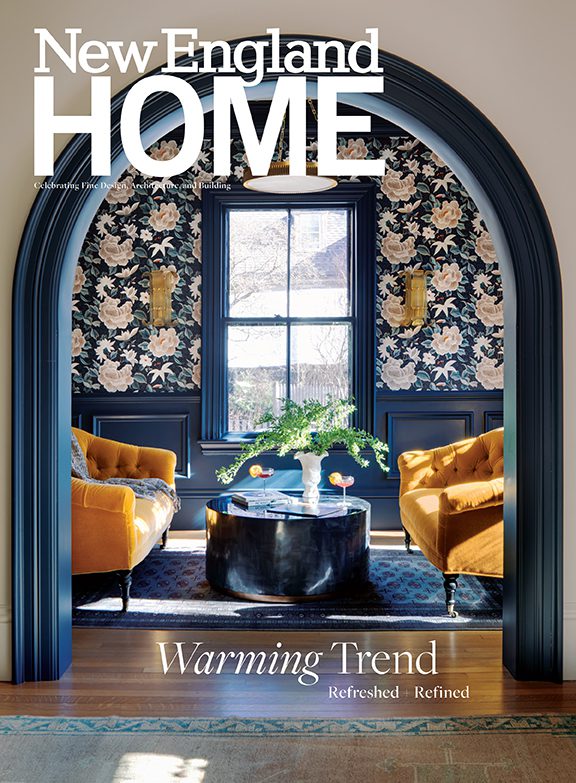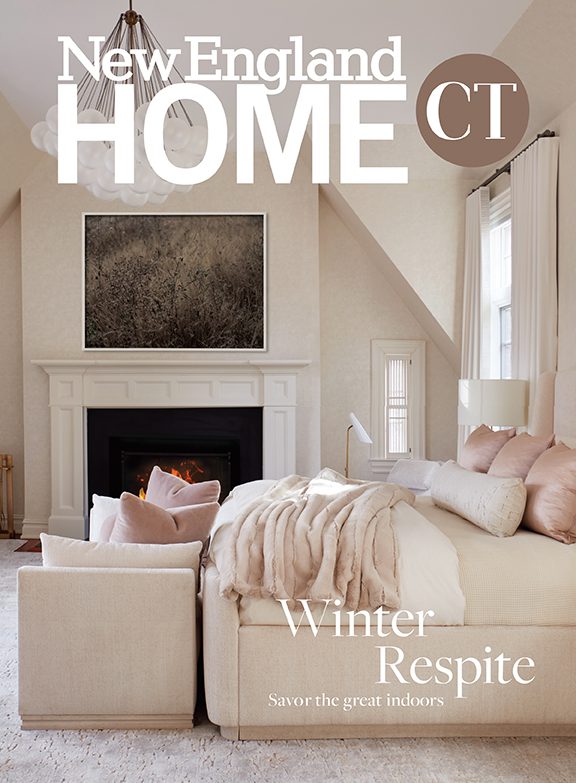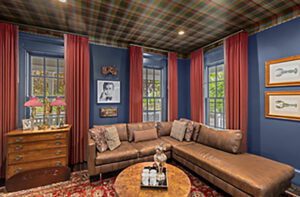Joining the Fun
June 6, 2016
A creative husband and wife enlist a team of Martha’s Vineyard design pros to create the perfect island home for the couple’s blended family.
Text by Stacy Kunstel Photography by Michael Partenio
That deep-blue ring of water that surrounds an island offers a sense of separateness from the world. Away from mainland troubles, anxiety dissipates, leaving the giddy feeling of freedom. That’s one reason so many people who visit Martha’s Vineyard never leave, or at least end up staking a claim they can return to as needed.
For Christopher Celeste and Nancy Kramer, two high-achieving creatives based in Ohio, the island represented something more substantial. It was the place where their two families could come together as one.
As single parents, each with three children, Celeste and Kramer vacationed on the island together for a few years, eventually marrying at a house they rented in 2007. Back in Ohio, they continued to live apart for another five years as they ran their businesses and their kids completed schools.
“While we lived in two different cities 150 miles apart back in Ohio, the island became the place where we blended our two families together,” says Celeste. “We realized we wanted to build a family home that would be here for generations and be part of the community.”
They started with someone they knew, Maggie White of Hob Knob Realty, who had found them the houses they rented. White, who is also a developer and the founder of Hob Knob Construction, introduced them to her chain of contacts and decades-long friends—all island based—who helped the couple create a home to suit a family of eight.
One of the properties White showed them, a lot of almost an acre in the middle of Edgartown, proved the perfect place to begin. Wanting to pay architectural homage to the historic nature of the village, the couple turned to local architect Patrick Ahearn. “Patrick really acted as a steward and a guide,” says Celeste. “We showed him a photo of a farmhouse we liked and right there he sketched it on a napkin, adding porticos, and that was it.”
Taking full advantage of the size of the lot, Ahearn placed the house toward the center, far from the activity of the street. In fact, it’s nearly impossible to see the Greek Revival–style house unless you’re looking for it. A carriage house blocks the view to the main house, ensuring a high level of privacy. “The carriage house becomes the foil for the street and creates a romantic passageway that lines up with the front door,” says Ahearn, of the disguise. “It acts like a portal to the hidden jewel beyond.”
Nestled among mature trees, the main house, pool cabana/guest house, garage, and carriage house all relate to one another through a series of gardens designed and installed by island landscaping company Donaroma’s.
“It’s all about the scale,” says Ahearn. “In Edgartown, the spaces between buildings become as important as the buildings themselves. They create hidden gardens and passages throughout the village. That’s exactly what happens on this property on a smaller scale.”
While the formality of the village is reflected in the crisp white clapboards and graying shingles of the exterior, Celeste and Kramer knew they wanted an interior with a more relaxed feel. “It’s not a cocktail party house; it’s a blended-family house where friends can come in and relax,” says Celeste. “We’ve got six kids. No matter what plan you draw there are going to be twelve to fourteen pairs of shoes lying on the floor inside the door.”
An open plan on the first level supplies the required informality. A wide entryway offers a view through the living room, into the dining room, and to the backyard beyond. Stairs to the bedrooms are tucked unobtrusively to one side, while a short hallway leads to the kitchen with its vaulted ceiling and a breakfast area. In the opposite wing lie a mudroom, office, and a small sitting room where Kramer and Celeste like to read the papers and take their morning coffee.
“We tweaked the interior layout of the house, but didn’t deviate too much from the floor plan,” says White. “At the time it was like the Brady Bunch, because it was their first house together. They looked at that house as their family home. It was exciting to see a family merge like that.”
The large, sprawling living room, with its mix of sofas, chairs, love seats, and loungers, offers a seat for everyone in the house. At its center is an almost literal piece of the island—an asymmetrical fireplace by stone artist Lew French. “It’s a conversational piece, a focal point,” says Celeste. French installed the piece, a mix of fieldstone and massive granite plinths, long before the furniture was placed. “Sometimes I would come in and he would just be sitting there staring at it, figuring out where the next piece would go,” Celeste recalls.
Kramer and Celeste both had ideas for island-based designer John Murphy. Kramer wanted the floors to remain natural, and she wanted to work with Connecticut-based Elizabeth Eakins to create rugs for the living room and the master bedroom. The couple’s other guidelines for Murphy included no blue and white, no boats, nothing nautical, and no overdecorating. “It’s not a yacht club,” Celeste jokes.
“They had a vision for the house,” says Murphy. “We hunted and gathered in Columbus, Ohio, and used things from Nancy’s mother’s house. We met at Brimfield, where we found the stand for the sink in the powder room and the metal chairs and cocktail tables in the living room. Christopher really got into it.”
While the look is a mix of traditional (a nod to Kramer’s tastes), slightly bohemian (reflecting Celeste’s love of pattern and having lived in India), and modern (in layout and pared-down woodwork), ultimately it’s an island retreat. “More than anything, this is a Martha’s Vineyard house,” says Celeste, noting that all of the art on the walls is by Martha’s Vineyard artists, from local galleries. “The process introduced us to a community of wonderful creatives,” he adds.
The couple has gone on to collaborate with some of those same talents again, in their work on four other houses as part of their company Facing West, which provides funding for community development projects worldwide.
Islands can be funny things. As much as they geographically separate us, they are awfully good at bringing us together. •
Architecture: Patrick Ahearn
Interior design: John Murphy, Tracker Home Decor
Builder: Hob Knob Construction
Landscape design and installation: Donaroma’s Nursery and Landscape Services
Share
![NEH-Logo_Black[1] NEH-Logo_Black[1]](https://b2915716.smushcdn.com/2915716/wp-content/uploads/2022/08/NEH-Logo_Black1-300x162.jpg?lossy=1&strip=1&webp=1)




















You must be logged in to post a comment.